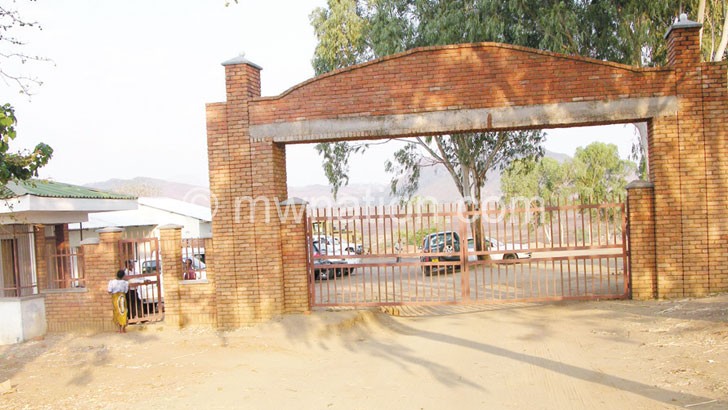City dwellers denied primary health care
City dwellers denied primary health care
In yesterday’s edition of The Nation we started analysing the implementation to date of the five-year Health Sector Strategic Plan II for the period 2017 to 2022. The first two stories in the series exposed how a weak financing model, overdependence on donors and poor infrastructure are not helping matters in as far as implementation is concerned. Today, we look at the issue from yet another perspective
Despite the Health Sector Strategic Plan launched in 2017 targeting to have public health facilities within a radius of eight kilometres, city dwellers continue to be denied access to primary and secondary healthcare.
The situation comes about because the country’s four cities of Blantyre, Lilongwe, Mzuzu and Zomba do not have district
hospitals to bridge the gap to the regional referral centres they each host.
The national health policy envisages a patient travelling less than five kilometres, a dream President Lazarus Chakwera’s Malawi Congress Party (MCP) played up to strengthen his historic victory in the court-ordered Fresh Presidential Election on June 23.
The five-year Health Sector Strategic Plan is set to expire in 2022 and focuses more on completing ongoing projects as
well as maintaining and upgrading existing health facilities rather than new infrastructure developments.
But the plan makes exceptions for major cities, where patients pay off-pocket costs to cross the neglected gulf splitting health centres from overwhelmed central hospitals.

Reads the strategy due for midway review: “However, there is the pre-planned construction of district hospitals in Lilongwe, Blantyre, Zomba and Mzuzu to provide primary and secondary health care services in areas where central hospitals are currently providing these services.
“In addition, there are plans to develop 900 new health posts in hard-to-reach areas for integrated provision of community services. Each health post will serve three to five hard-to-reach catchment areas.”
While health rights activists say the country is unlikely to meet the strategic goals at the current pace, Ministry of Health Principal Secretary Charles Mwansambo said government has completed environmental and social impact assessment for the project despite some shifts.
He said: “The idea is still alive. However, there is a new approach where we want to upgrade urban health centres as safe places where city residents can go before going to central hospitals.”
But health rights activist Maziko Matemba wants government to accelerate the pace as the country’s
population has swelled in the past decade with cities experiencing a boom due to rapid urbanisation. the pace as the country’s
He said: “We haven’t done well in terms of infrastructure development even though our population has grown from about four million to 18.4 million since the country attained independence in 1964.”
On her part, Minister of Health Khumbize Chiponda put a human face of underserved babies to highlight the sluggish growth of the country’s health facilities recently when she launched the national steering committee on the promises the country made at last year’s International Conference on Population and Development in Nairobi, Kenya.
The Nairobi promises included increasing healthcare spending to 15 percent of the national budget by 2030 in what campaigners described as postponing the promise African heads of State made three decades ago at the African Union meeting in Nigerian capital, Abuja.
With the healthcare spending still short of the Abuja Declaration 20 years on, the minister said: “I always give the example that is closer to home. At Kasungu District Hospital, about 300 babies are born every month, but are we building enough hospitals and schools to better serve these babies?”
Matemba says no, arguing that the absence of district hospitals in cities is an indication that the public health sector, which serves the majority of Malawians who cannot afford lofty bills in private hospitals, remains weak and not easy to reach.
In the case of Blantyre, in July 2002, Libya’s fallen flamboyant leader Muammar Gaddafi visited an overwhelmed hospital and promised to construct a district hospital for the country ’s commercial capital to ease pressure on Queen Elizabeth Central Hospital.
But 18 years later, only grass and shrubs are rising on the abandoned site of the symbol of the fallen military rulers’ dashed expansionist spree in southern Africa.
The perimeter fence at the site also had steel bars vandalised.
The big promise did not start with Gaddafi’s dramatic visit. It gained momentum with former president Bakili Muluzi’s Health for All agenda.
The lack of district hospitals in cities exerts avoidable pressure on central hospitals already weighed down by a high disease burden, shortfalls of skilled staff and underfinancing.
Frank Simeza, director of Mzuzu Central Hospital, says the long queues seen at the Northern Region’s referral hospital deny deserving patients’ adequate attention when they need it most.
He said: “Central hospitals are supposed to offer specialised treatment to patients referred from district hospitals, but the tertiary facilities are spending time and resources giving primary and secondary care to patients who would have been treated in district hospitals.”
Meanwhile, all of four central hospitals from Zomba’s colonial affair to the newest opened in Mzuzu in 2000 are overcrowded with some patients sleeping on floors of unsanitary wards.
Malawi Health Equity Network executive director George Jobe says the government only needs to abolish bypass fees to feel the true extent of the gap.
He explains: “The absence of district hospitals in cities remains a big challenge that must be tackled with urgency in the mid-term review of the health sector strategy because it has contributed greatly to congestion in all three central hospitals.
“Unfortunately, the burden was transferred to the people when government introduced by-pass fees for people who go straight to central hospitals when cities have no secondary health facilities to refer them to central hospitals.”
Jobe terms the bypass fee— now pegged at K1 500—a misplaced punishment that must be scrapped because the people are not to blame.
As the gift from Gaddafi crashes to the ground a brick at a time, Blantyre residents use Ndirande, Zingwangwa and Limbe health centres as substitutes for the abandoned district hospital sandwiched between Kamuzu College of Nursing and the Emergency Treatment Unit at Kameza.
Blantyre’s district hospital has stalled despite having completed designs and initial injection of K300 million in the 2019/20 Budget. The project was defunded in the 2020/21 Budget





